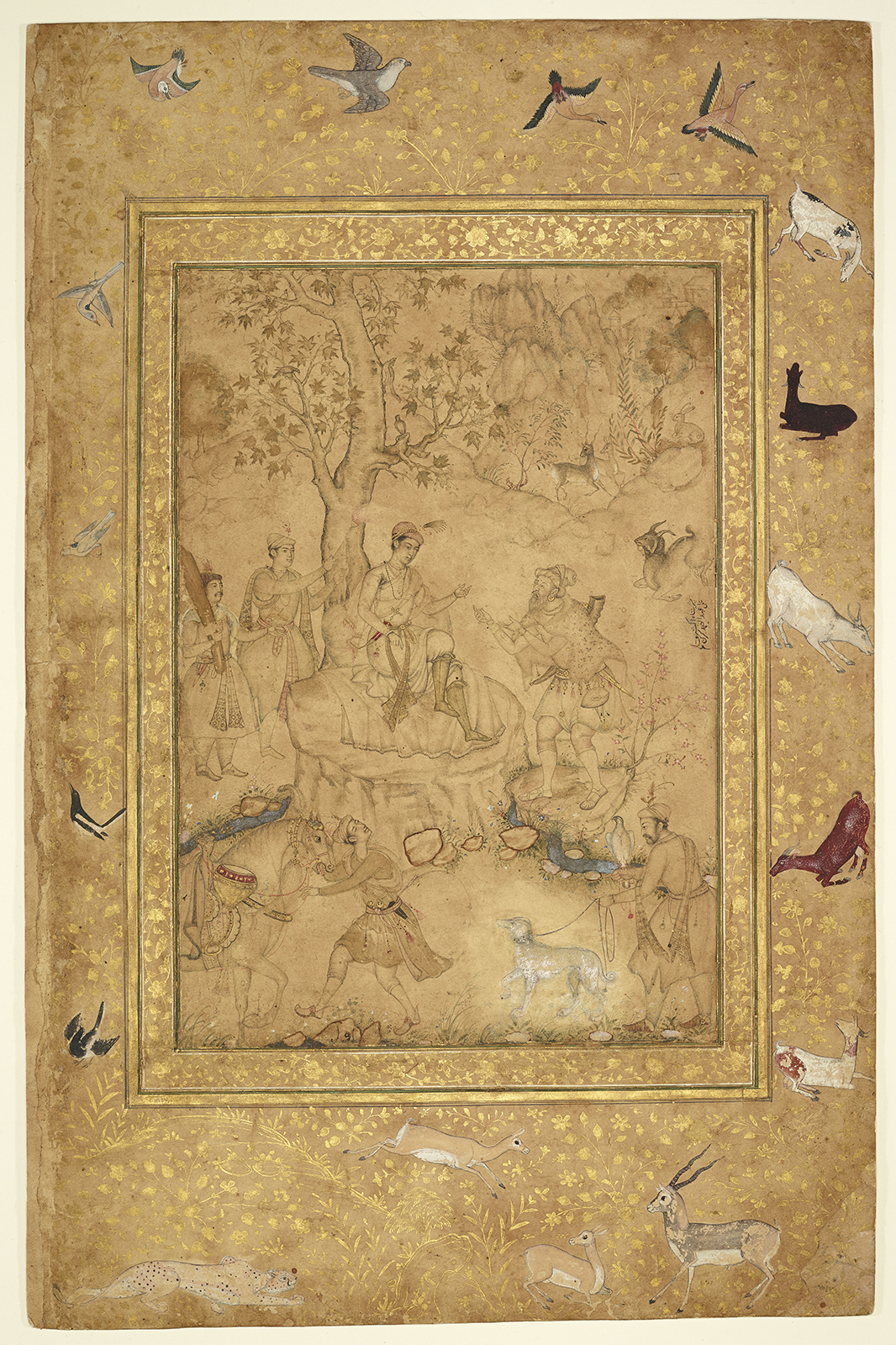Click on the image to zoom
Akbar and a Dervish
- Accession Number:AKM141
- Creator:signed by Abd al-Samad (Shirin Qalam)
- Place:India or Pakistan
- Dimensions:39.1 x 25.4 cm
- Date:ca. 1586–87
- Materials and Technique:ink and opaque watercolour on paper
In this single-page drawing a dervish is granted a spontaneous audience with the ruler. This topic was popular in Iranian painting, and through the exchange of ideas and motifs it also reached Mughal India. Abd al-Samad, who is named creator of this artwork in the inscription, was one of the émigré artists who provided the Mughal royal court with the Iranian tradition. After his arrival at Humayun’s court, he served for nearly 50 years in the Mughal Empire, including during Akbar’s reign.[1] Abd al-Samad enjoyed the interest and patronage of Mughal rulers and was given the epithet shirin qalam or “sweet pen.”
Further Reading
This drawing presents a masterly culmination of ideas and technique. Abd al-Samad combined Iranian elements (such as the royal horse with small head and corpulent body, the dervish’s accessories, and the tree) with Mughal elements (including the horse keeper with his turned head, walking straight, and architectural style).
His use of the nim qalam (half pen) technique emphasizes perspective in the drawing and distinguishes the Mughal interpretation of the Iranian topic from its origin. Nim qalam is a method of creating drawings as finished works, a kind of tinted drawing especially developed in the Mughal Empire and the favoured technique of the Iranian artist Aqa Reza [2] (1560–1621) (see AKM166 and AKM906). The technique is closely related to European grisaille, a method of painting or drawing in grey monochrome, often to imitate sculpture.
In this drawing, the ruler and the dervish meet in a grassy field with a large tree and a small silver stream running across it. The large plane tree that provides shade has some importance in Iranian painting. The placing of the ruler under the tree on the large rock gives the impression of a throne. Gesturing with his hands turned to the ruler, the dervish celebrates the unexpected arrival. The pair converse, surrounded by courtiers carrying out different activities and by animals both wild and trained.
The second part of the drawing’s inscription reveals the name of the young ruler, who is no less than the great shah of the Mughals in India, Akbar. The Afghan dog and the falcon, as well as the antelopes, hare, and goat in the rocky landscape with the silhouette of a city in the background, suggest that Akbar has gone hunting accompanied by courtiers and servants.
The drawing illustrates Akbar’s keen interest in different religious beliefs. He consulted Muslim as well as Hindu holy men at his court in cases of religious and interfaith discussions. Akbar was also interested in Sufis and hermits.[3] This single dervish, who Annemarie Schimmel has suggested is a member of the Khaksar order, is in this drawing distinguished by his horn, kashkul (beggar’s bowl), and garb.[4] The juxtaposition of the worldly ruler with all his wealth and the dervish apparently living in poverty is a topic with a long history.
— Filiz Çakır Phillip
Notes
1. Sheila Canby, Princes, Poets & Paladins, 86; Treasures of the Aga Khan Museum: Arts of the Book & Calligraphy (Istanbul: Aga Khan Trust for Culture/Sakıp Sabancı University and Museum, 2010), 110.
2. Majlis Library, Tehran, Acc. No. 13651, page 38r.
3. Anthony Welch and Stuart Cary Welch, Arts of the Islamic Book: The Collection of Prince Sadruddin Aga Khan (Ithaca, NY: Cornell University Press, 1982), 162.
4. Welch and Welch, 167.
References
Canby, Sheila. Princes, Poets & Paladins: Islamic and Indian Paintings from the Collection of Prince and Princess Sadruddin Aga Khan. London: Trustees of the British Museum, 1998. ISBN: 9780714114835
Phillip, Filiz Çakır. Enchanted lines: drawings from the Aga Khan Museum collection. 2014. ISBN: 9780991992874
Welch, Anthony, and Stuart Cary Welch. Arts of the Islamic Book: The Collection of Prince Sadruddin Aga Khan. Ithaca, NY: Cornell University Press, 1982. ISBN: 9780801498824
Note: This online resource is reviewed and updated on an ongoing basis. We are committed to improving this information and will revise and update knowledge about this object as it becomes available.


